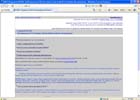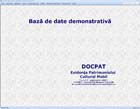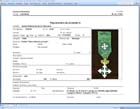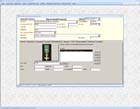Published in Revista Muzeelor no. 1-6/2001, 1-2/2002, pp. 72-80.
The last version of the Norms in 2008 issued by the Museums Department of the Minsitry of Culture and approved by a Government Decision ignored the decisions of the National Commission for Museums and Collections, the critics and proposals over the years, including my modest paper, Therefore, unfortunately, my opinios are entirely up-to-date after 6 years.
The Norms regarding the listing of movable cultural heritage were published in Monitorul Oficial al României (The Official Journal of Romania), Part I, no. 349/ 24th of May 2002, through the Order no. 2053 of the Ministry of Culture and Religious Affairs, following the article no. 77 (1) and (2) of the Law no. 182/2000 on the protection of movable cultural heritage
Unfortunately the above mentioned Norms have major mistakes and omissions, many differences even compared to the text of the Law no. 182/2000. They are confusing and non-professional and their application will be difficult if not impossible. We think that the Norms should be abolished and replaced by a new version, based on a larger contribution and debates inside the museum community. To correct a mistake is never too late.
There are at least ten major points to discuss:
1. The change of the definitionof cultural good of special or exceptional value, susceptible to be listed, as it appears in the Law no. 182/2000, by replacing the word such as (in the Law) with the word are (in the Norms);
2. The arbitrary division of selection criteriain general and specific, while they are all general criteria impossible to dissociate; and introduction of arbitrary quantitative criteria (under 150 points, 150 - 300 and over 300) in stead of qualitative ones;
3. The omission of some important criteriafor listing, such as belonging to a hoard or assembly, made of precious metal, etc;
4. The omission of the standard object card among the documents supporting a listing, and the stupid introduction of the obligation to send the complete inventory of cultural objects owed or administrated by an institution; the object card is the identity card of the object and must accompany it in all circumstances, being the only way to avoid replacement or stealing, and to allow the identification and the judgement of the value of the object;
5. The omission of several mandatory fields in the documents describing the goods proposed for protection by listing, such as place of discovery (for Archaeology, Numismatics, Natural Sciences and Ethnography); weight, for coins and objects made of precious metal; belonging to a hoard, assembly; the associated persons/ events (for History), owner and accession number and so on;
6. No specification on the proposal procedure for hoards, bronze deposits, assemblies of objects, sometimes containing thousands of pieces; all exceptional, therefore a priority for the Thesaurus category of protection;
7. Unreasonable termsfor fulfilment of listing procedures, sometimes only three to five days;
8. The entire omission of the Institute for Cultural Memory (cIMeC) and of the communication and documentation procedures between the Ministry of Culture and Religious Affairs and the Institute for Cultural Memory, nominated by Law no. 182/2000 to design and maintain the national databases of listed goods, to archive the listing files and original documents etc.; and no mention of the public access right to protected goods information;
9. The total omission of modern documentation and communication technologies, such as computerised databases, digital object files and images, deposition of documents in both paper and digital format etc, a 19th century vision of the procedures; the more that all museums and County Agencies for Culture, Religious Affairs and Cultural Heritage have computers, many digital cameras and Internet connection;
10. Omission of the disposition contained in the Law 82/2000 to give priority to proposals for listing in the Thesaurus category, i.e. to exceptional goods.








